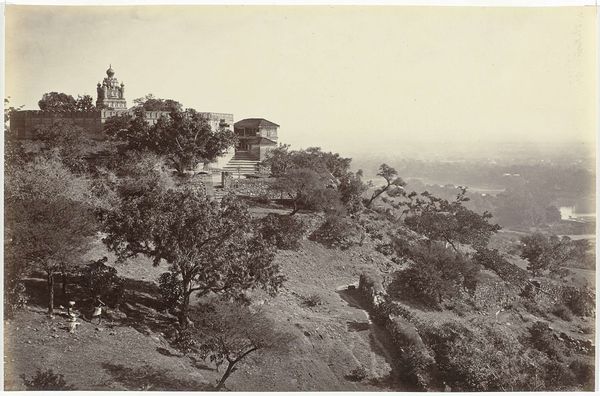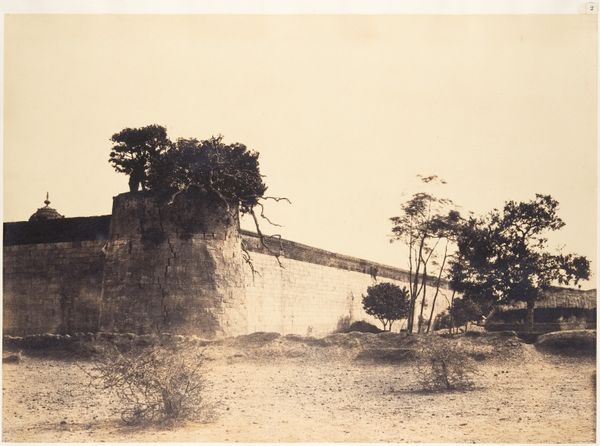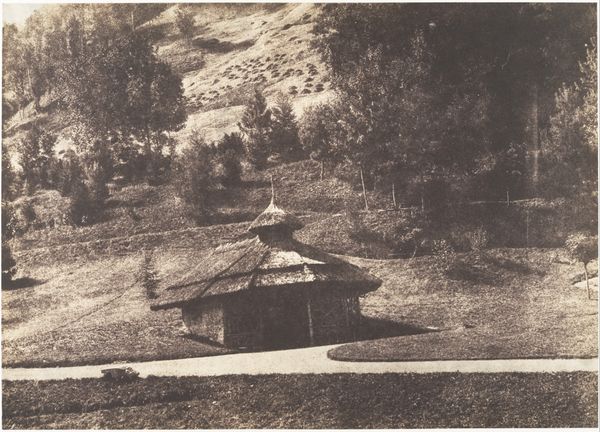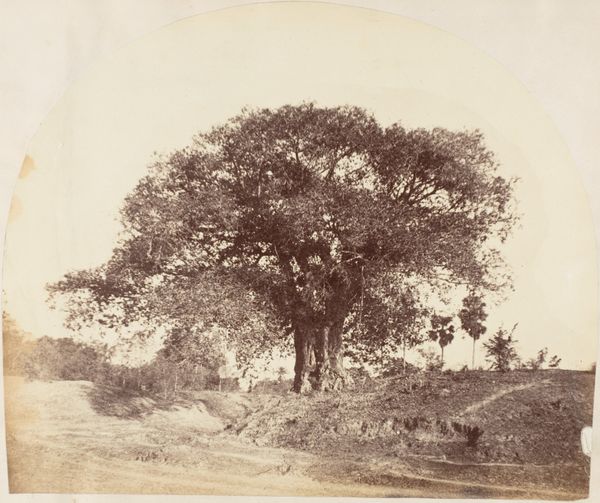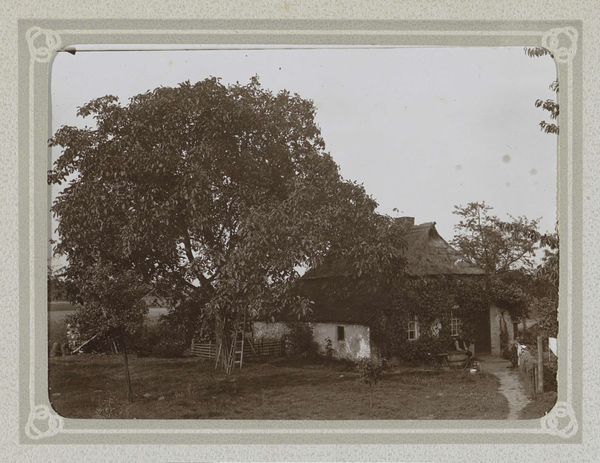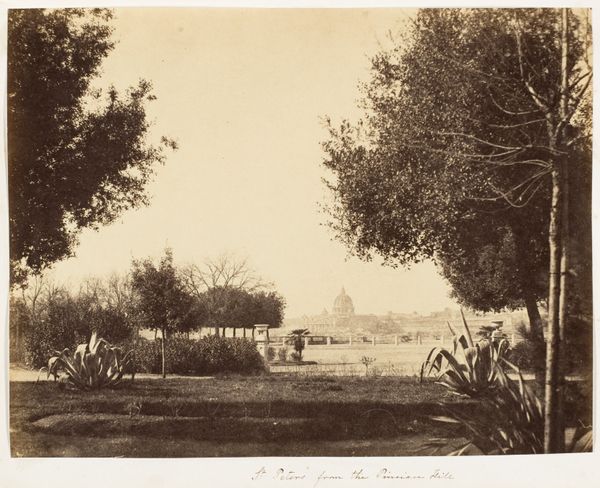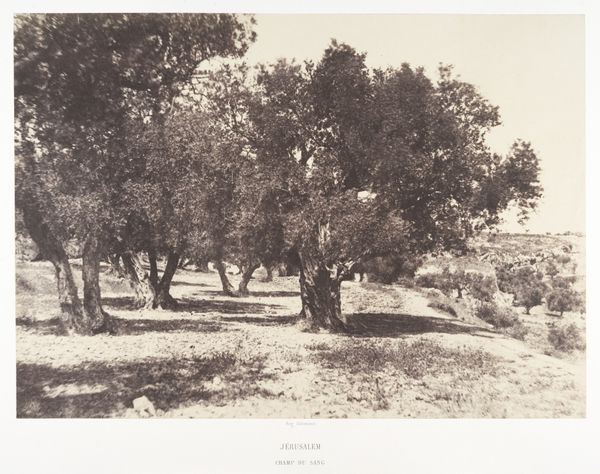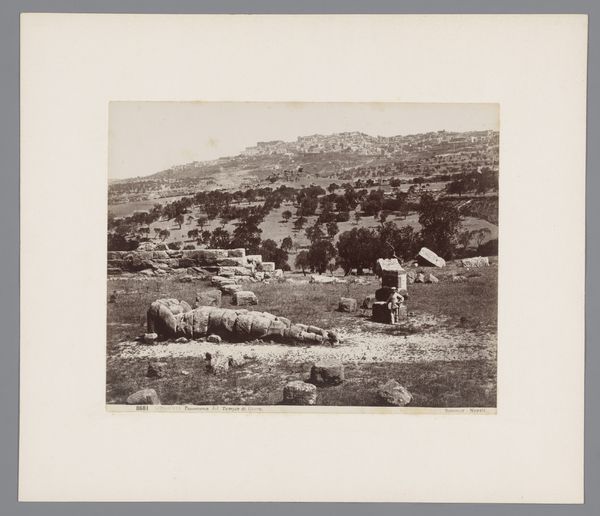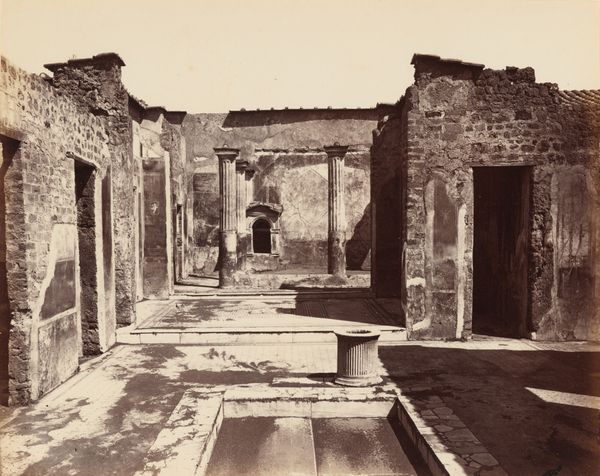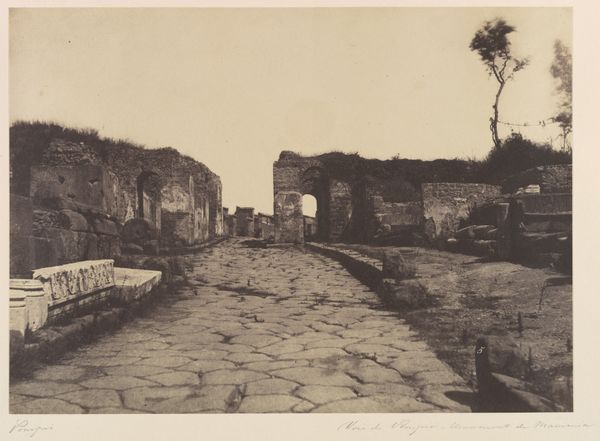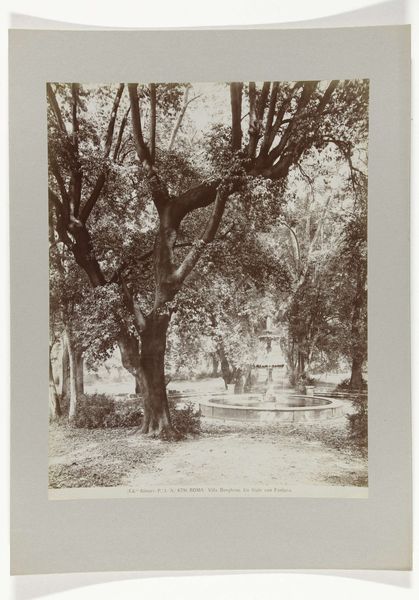
photography, gelatin-silver-print
#
landscape
#
photography
#
orientalism
#
gelatin-silver-print
Dimensions: Image: 8 7/16 × 10 13/16 in. (21.5 × 27.4 cm)
Copyright: Public Domain
Curator: Ah, yes, John Thomson's 1869 gelatin silver print, "View over Amoy from Pe-Le-Jong." It resides now in the Metropolitan Museum of Art. What strikes you initially? Editor: The overwhelming sense of stillness. It’s almost sepia-toned into silence. Like pausing a long journey to catch your breath and soak it all in. The branches overhead frame the scene like a theatrical curtain, inviting us into a story. Curator: The vantage point, of course, isn't neutral. Thomson, as a Western photographer in China, brought a particular lens. This photograph speaks volumes about power dynamics inherent in image-making. His work is often framed through the lens of Orientalism. Editor: Power, sure, but maybe a hint of vulnerability too? To plant oneself in such a faraway land, lug all that equipment… that takes guts! I wonder if he felt like an intruder or an explorer. Perhaps a little bit of both. That big tree feels very grounded in contrast to the mistiness of the view below. Curator: Thomson was deeply embedded within treaty port society. His photography not only documented but actively shaped perceptions of China. "View over Amoy" reinforces a sense of the picturesque East for a Western audience, an aesthetic of tranquil exoticism far removed from the sociopolitical realities of the time. Note how the human presence is muted, subordinated to the panoramic vista. Editor: I get that. But even within that framed exoticism, there's something deeply human. A yearning for perspective, for understanding a place from a height. I find myself drawn to the mundane—the potted plants, the rough-hewn stone of that structure, so ordinary alongside such a grand vista. And it is precisely because it feels old-fashioned, removed from our frenetic lives, that the photograph is a bit seductive. Curator: Absolutely. The material realities are crucial to understanding its cultural weight and ideological functions within that era. Examining its historical construction allows us to critically unpack the colonial gaze. Editor: It is such a gorgeous point of entry to the conversation! It makes me consider what a current version of that landscape looks like—photographed by a local artist instead. Curator: It reminds us how crucial it is to always seek the counter-narratives and challenge the historical record through a multifaceted contemporary approach.
Comments
No comments
Be the first to comment and join the conversation on the ultimate creative platform.

